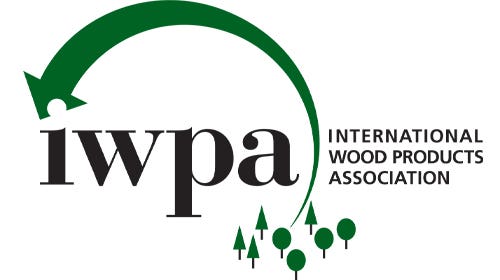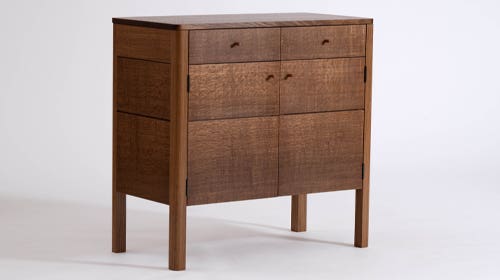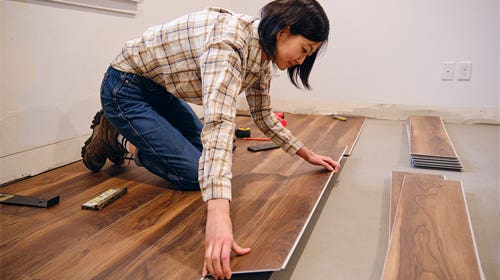Swiss pear is a rarity among exotics
Swiss pear, also known as European pear, is an exotic wood primarily used in architectural millwork when it has no figure and for furniture when it exhibits a mottled or…
Swiss pear, also known as European pear, is an exotic wood primarily used in architectural millwork when it has no figure and for furniture when it exhibits a mottled or pommele figure. Supplies of European pearwood are available from a limited number of U.S. exotic wood dealers in two species, the pear trees that grow in orchards (Pyrus communis) and the trees that are found in the wild (Pyrus sorbus).
European pear primarily grows in France, Germany, Austria and Switzerland, and is among Europe’s hottest woods. In this country, it is sold in both solid and veneer form. But it’s not always easy to find in the United States, and obtaining decent widths can be difficult because of the size of the tree.
“There are two species,” explains Rick Hearne of Hearne Hardwoods in Oxford, Pa. “Pyrus sorbus grows wild out in the woods — like black cherry — [producing] straighter and longer trees. Pyrus communis is used for domestic pear eating and they prune the trees to keep them low to the ground so they can pick the pears.”
Pear trees are normally about 20' to 30' tall, but those in the wild can reach 50'. Mature logs can run up to 8' to 12' long, with widths normally 4" to 8", but sometimes as wide as 18". The heartwood is pinkish-red and the sapwood is a pale yellow. Most of the pearwood imported to the United States is steamed to accentuate the pinkish-red color and reduce stress in the drying process.
“Pearwood is very nondescript,” says Steve King of All Righteous Woods, a retailer in Rowley, Mass. “We sell it mostly for architectural jobs. It’s very consistent in color and figure. It’s usually used as is; not stained. It’s steamed so it stabilizes and also to allow the color to blend into a very uniform color. Typically the logs run from 10" in diameter up to 2', and they’re usually from working orchards. The typical log is nothing over 8'. If there is anything decent over 8', it’s sent to a veneer mill; not necessarily the best stuff, but the longest.”
“We’ve sold quite a bit of pear in years past,” says Greg Engle, sales manager for Certainly Wood, a veneer dealer in East Aurora, N.Y. “They use pear in Europe like we use cherry here. On the veneer side, long, straight-structured logs are primarily what most people are requesting. A nominal width, ranging only from about 6" up to 10", is what you’d expect in a pearwood log.”
Swiss pear is used for fine furniture, cabinetry, musical instruments, tool handles, mechanical instruments, turning, and decorative veneer for paneling, marquetry, and inlay. Pearwood has a very fine texture and is usually straight-grained, although it occasionally exhibits a figure. It can be dyed to look like ebony. The wood is heavy and hard with a specific density ranging from .58 to .70. Pearwood’s working properties are all rated as good to excellent.
“I haven’t had many requests over the years for figured material,” adds Engler. “It’s slowly beginning to pick up in popularity again, but in the past seven to eight years, the primary request has always been flat cut, non-figured … We’ve always nicknamed it ‘pink ebony’ because of how close-grained and structured the wood is. There are some issues with it shrinking and expanding. When you are laying out faces, the wood itself has a tendency to shrink and even expand based on moisture content, especially when working with water-based glues.”
“It’s one of those woods that just improves with age, like a fine wine,” says Hearne. “It has a lot of other qualities, too. It’s a good dense wood; it’s one of the hardest of the fruit woods. They make flutes and recorders out of it. They have even made violins out of it.
“The American pear could be used in the same way but, when grown commercially, the trees are pruned real low to the ground. And every 25 to 30 years, they plow them under and start all over again.”
Swiss pear is generally available in 4/4, 5/4, 6/4, 8/4 and 12/4 thicknesses. Retailers quoted prices of $11 to $19/bf for 4/4 stock without figure. Figured material is priced higher, while pearwood veneer starts around $4.50/sq. ft.
This article originally appeared in the November 2008 issue.







